When you stroll through the French capital, you might not give the benches of Paris a second thought.
And yet, these street furniture are everywhere—hundreds of them, quietly blending into the rhythm of the city.
These iconic green benches, designed by French architect Gabriel Davioud, have been a fixture of Parisian streets since the grand transformations of the 19th century under Baron Haussmann.
I must admit, when I first set out to write about them, I struggled to find photos in my collection.
Like most people, I had walked past them countless times without truly noticing.
They are so much a part of the cityscape that we barely register their presence—until we stop and sit.
But once you start paying attention, they reveal a story of their own.
And after reading this, I bet you’ll never look at the benches of Paris the same way again!
The First Public Benches of Paris
The first benches made from stone or wood, as well as seats for rent, are recorded from the 18th century.
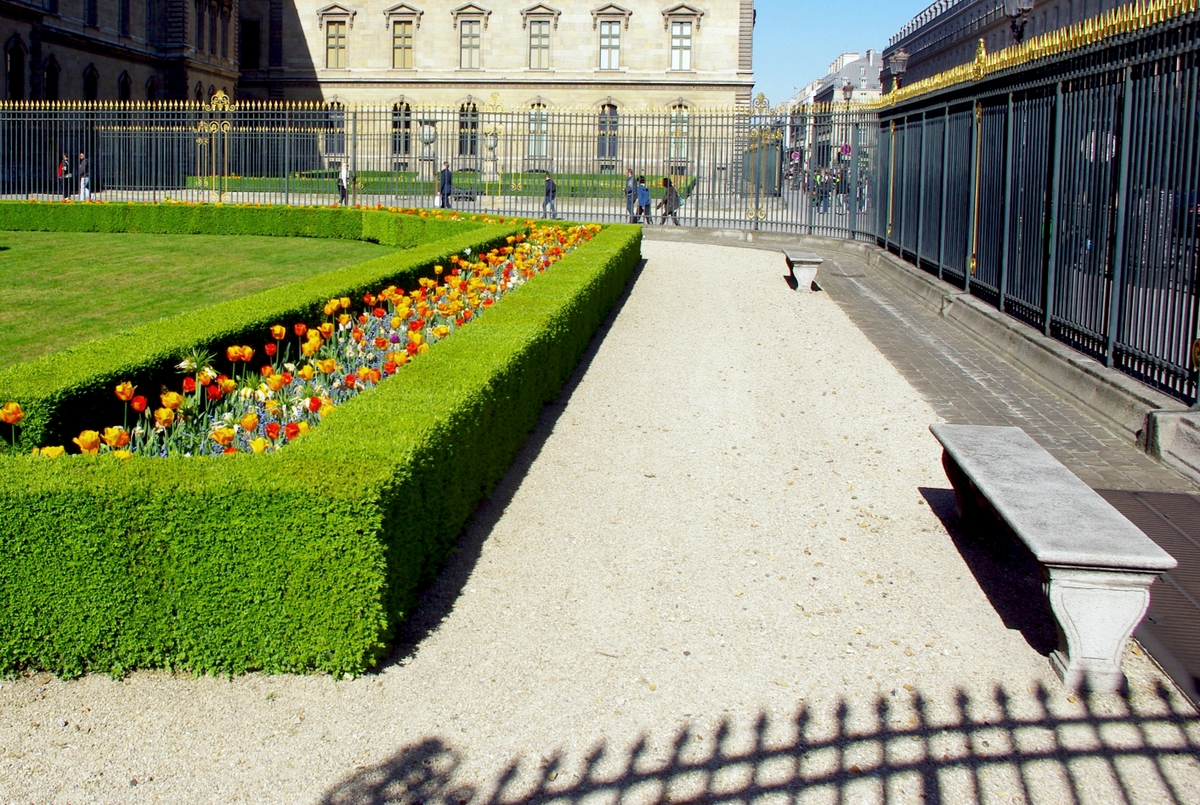
But it was only during the Second Empire (mid-19th C.) that Paris’ pavements were furnished with thousands of public benches.
When Baron Haussmann undertook the great urban work across the city of Paris, a series of structures were set up along the newly opened boulevards.
All street furniture was harmonised in the same style and dark green colours.
This was true for Morris columns, pissoirs, newspaper kiosks, lampposts, and by the 1870s the Wallace fountains.
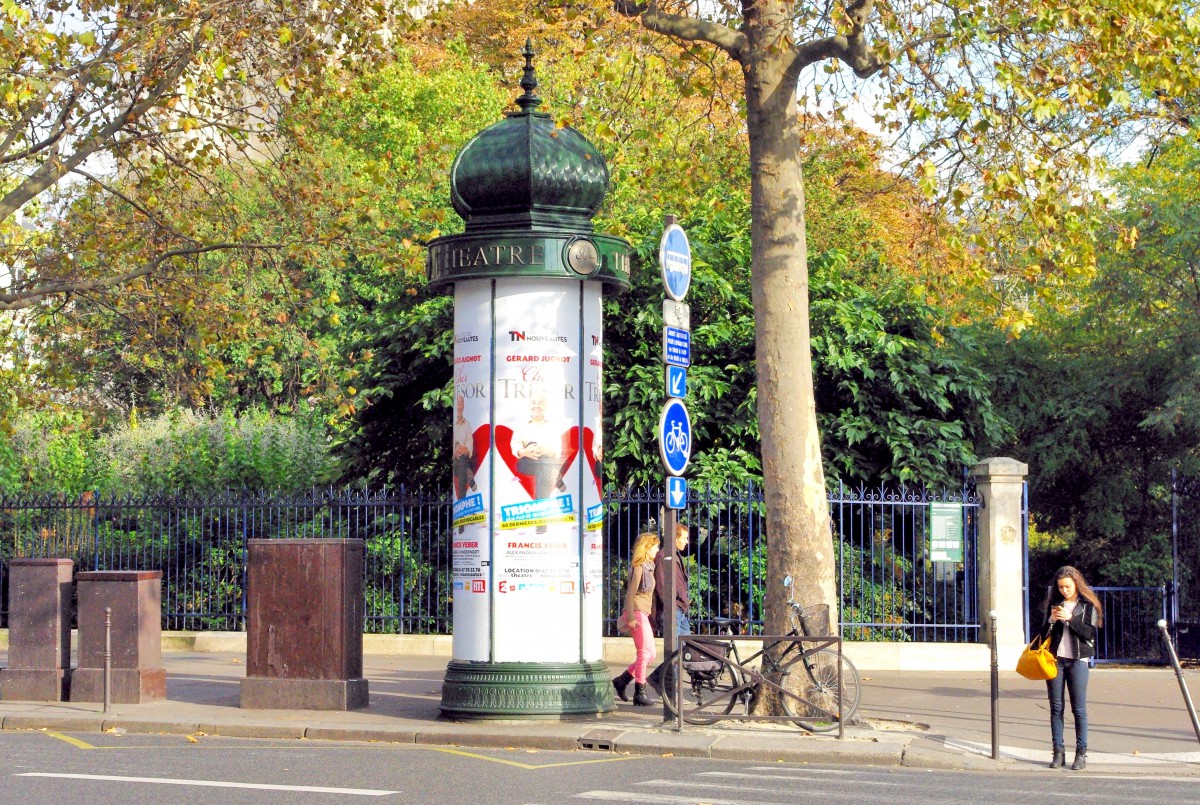
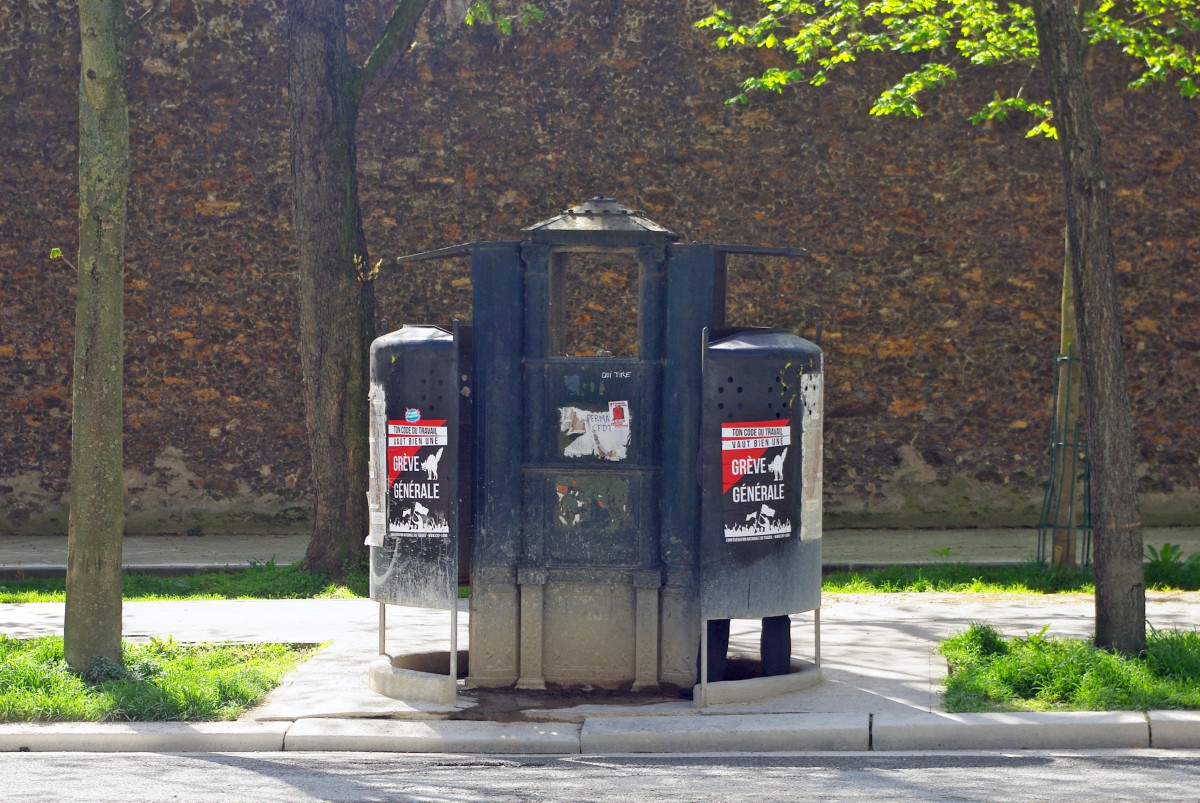

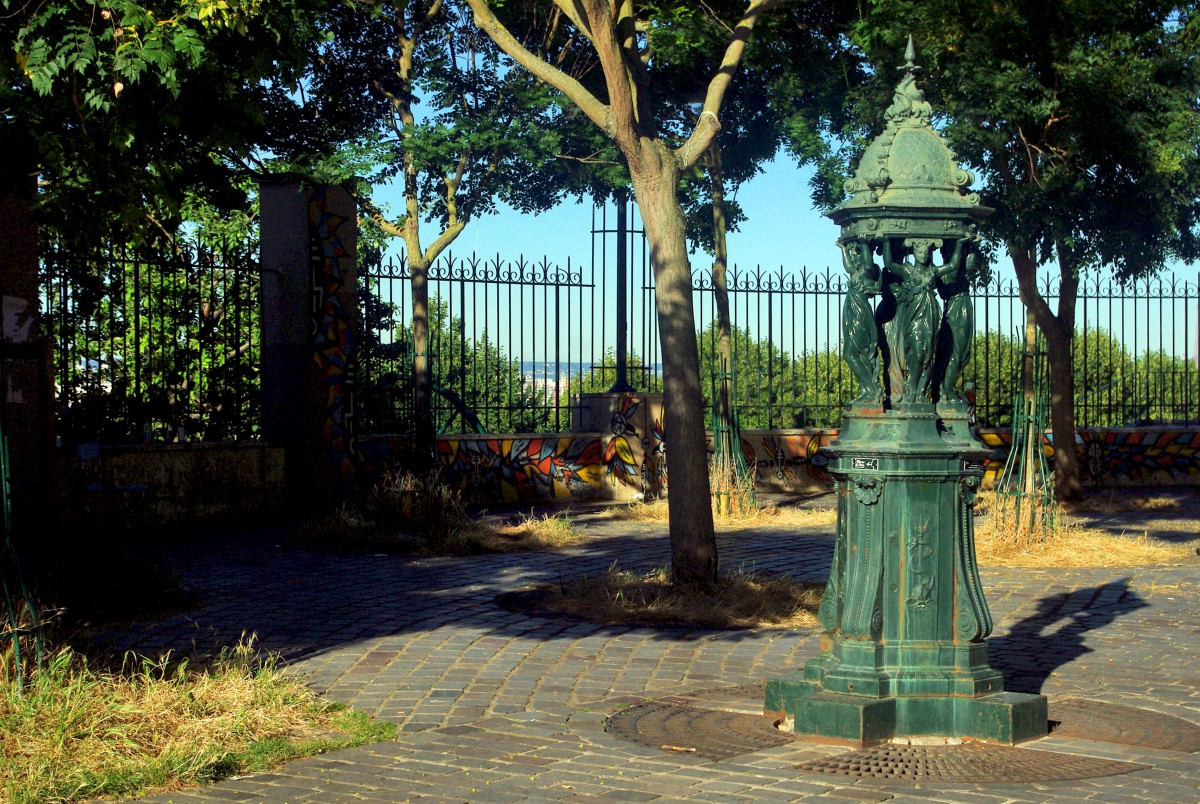
The benches of Paris were no exception to that rule.
They were also codified and painted in dark green.
The public benches were designed by French architect Gabriel Davioud in the 1850s.
He was the main collaborator of Baron Haussmann and his works included the magnificent entrance gate of Parc Monceau, the Saint-Michel fountain and the Châtelet theatre.
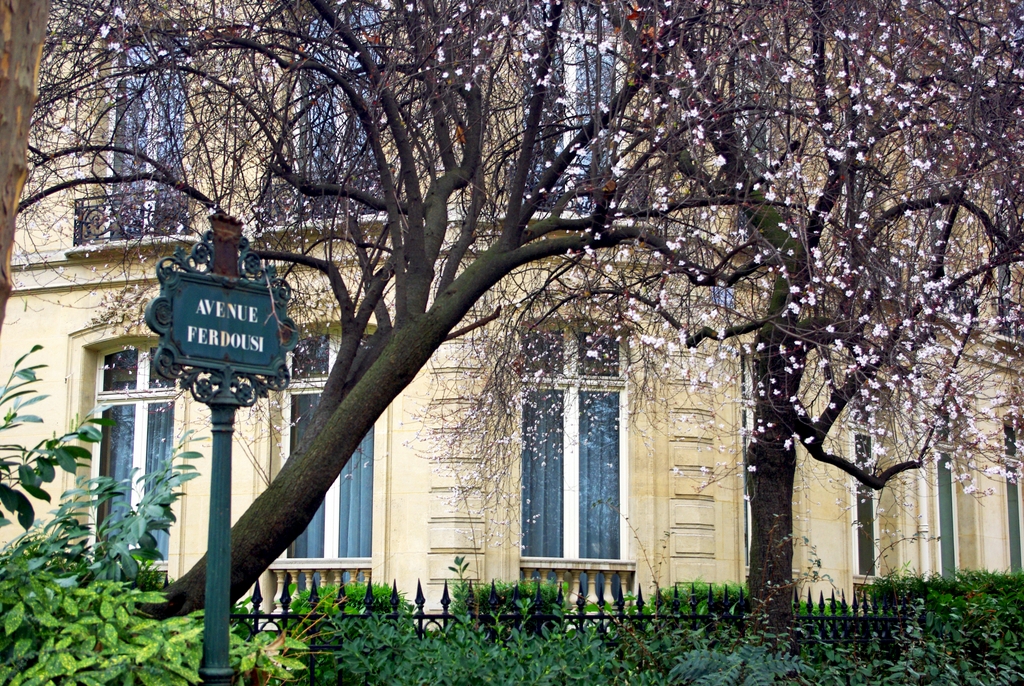
For the comfort of walking Parisians
Baron Haussmann introduced the public benches for the comfort of the walking Parisians.
At that time there were no cars and public transport was not as efficient as it is today.
Therefore people walked much more than today… and as you can guess, the benches were greatly appreciated for providing a comfortable place where people could catch their breath!
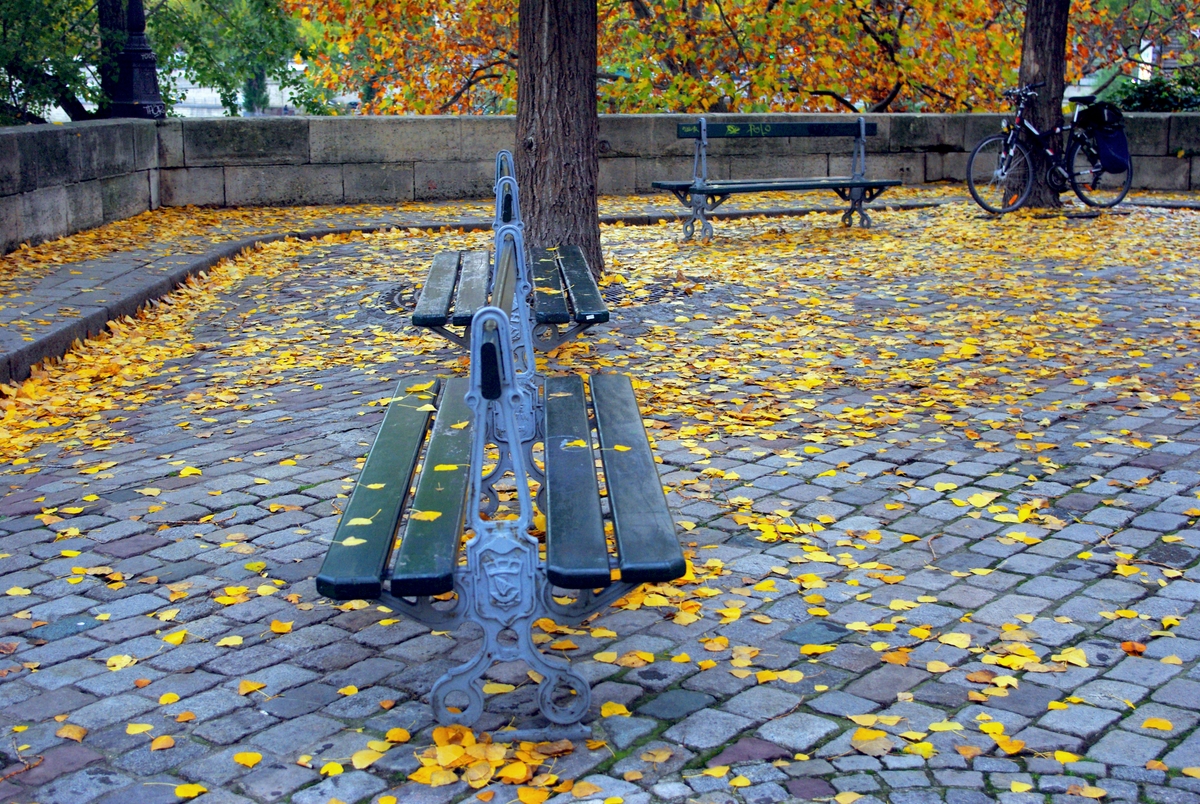
The first public benches appeared on the Grands Boulevards and in the public gardens (les squares parisiens) opened by Haussmann.
It is now obvious that many bench locations have since become obsolete.
On many occasions, I spotted a bench and wanted to take a little rest.
But it was often located too close to a car and the gutter, or next to a dirty and ugly litter bin… a puddle around it (hoping it’s not something else!), litter on the wooden boards.
Why would I want to sit there? How times do change!
Over time, the models of public benches have been modernised and diversified.
Some models have been created with the intention of stopping homeless people from sleeping on them.
But let’s face it, this strategy hasn’t been well-received by many Parisians.
Some find it cruel. As a matter of fact, the homeless are not the only people who might like to lie down on the Paris benches…

Madame, has anyone ever taught you the rules of propriety? Tsk-tsk…
The two models of Paris’ benches
It is estimated on Wikipedia that there are around 100,000 public benches designed by Davioud throughout Paris. (although I have to say I’m a bit doubtful about this high figure – other sources show 10,000).
Davioud had two models designed: the straight bench and the ‘gondole’ bench.
The straight bench (le banc droit)
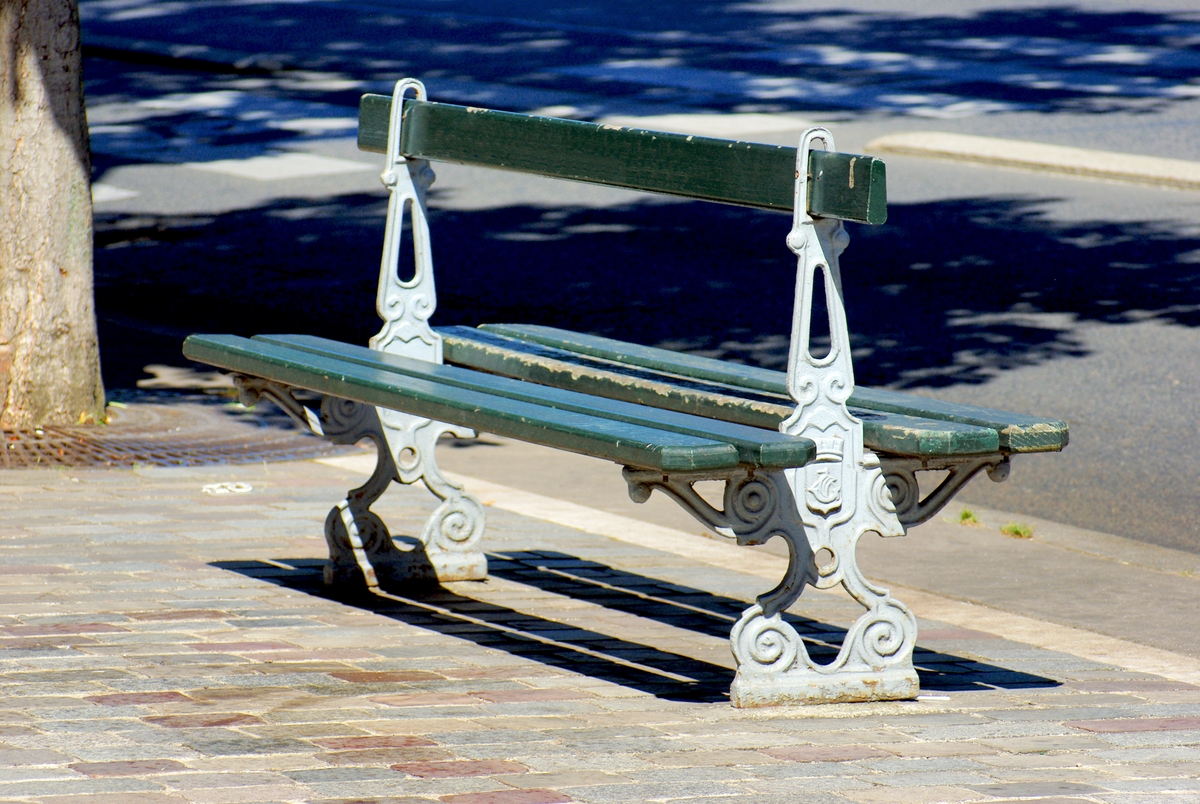
The first model of the bench is made up of straight and perpendicular boards held by a cast-iron structure that displays the coat of arms of the City of Paris.
The bench consists of one or two sides.
It is found on the pavement of avenues and boulevards, aligned with the street trees.
The gondole bench (le banc gondole)
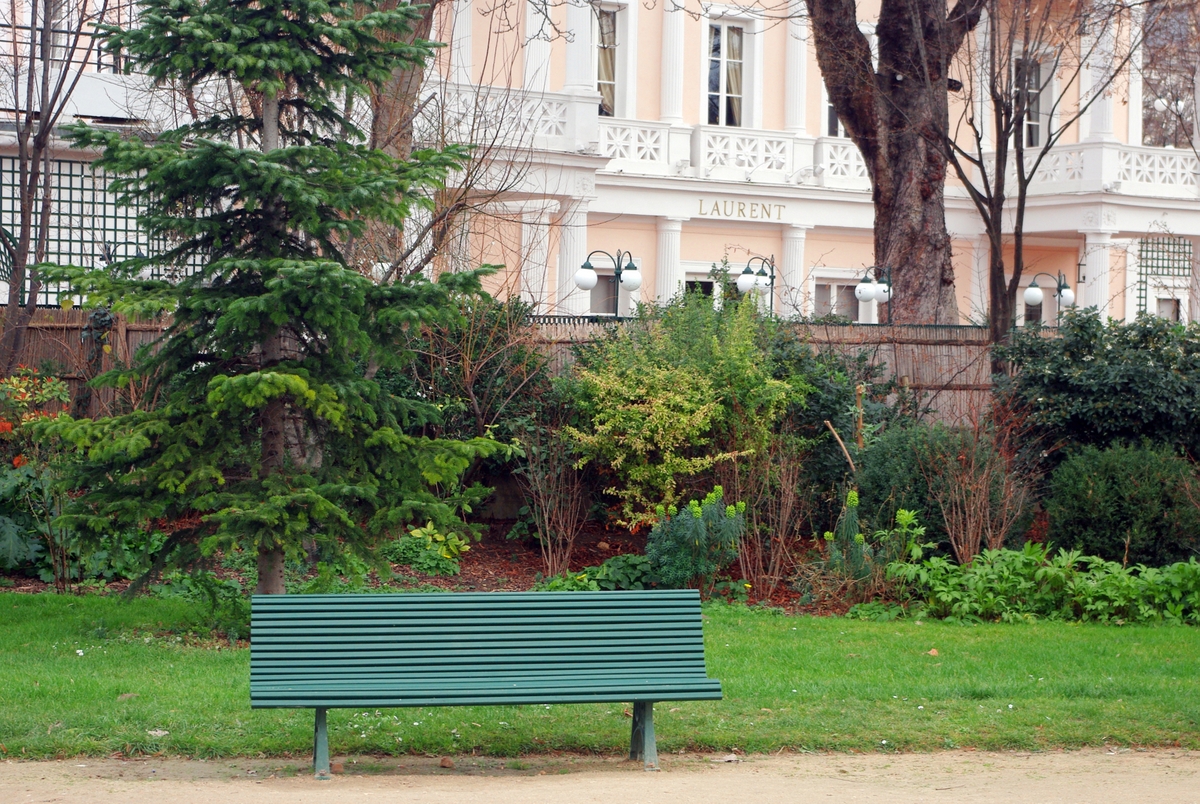
It consists of strips of wood painted in dark green and supported by cast-iron legs.
The deep-seated bench is mainly found in the public gardens of Paris.
Other models of public benches
Aside from Davioud’s benches, there are other models found in Paris.
You’ll spot them in districts that are post-Haussmannian: Jardin des Plantes, Parc André Citroën and Parc Martin Luther King.
The classic “garden bench” as seen in square Roger Stéphane (7th arrondissement):
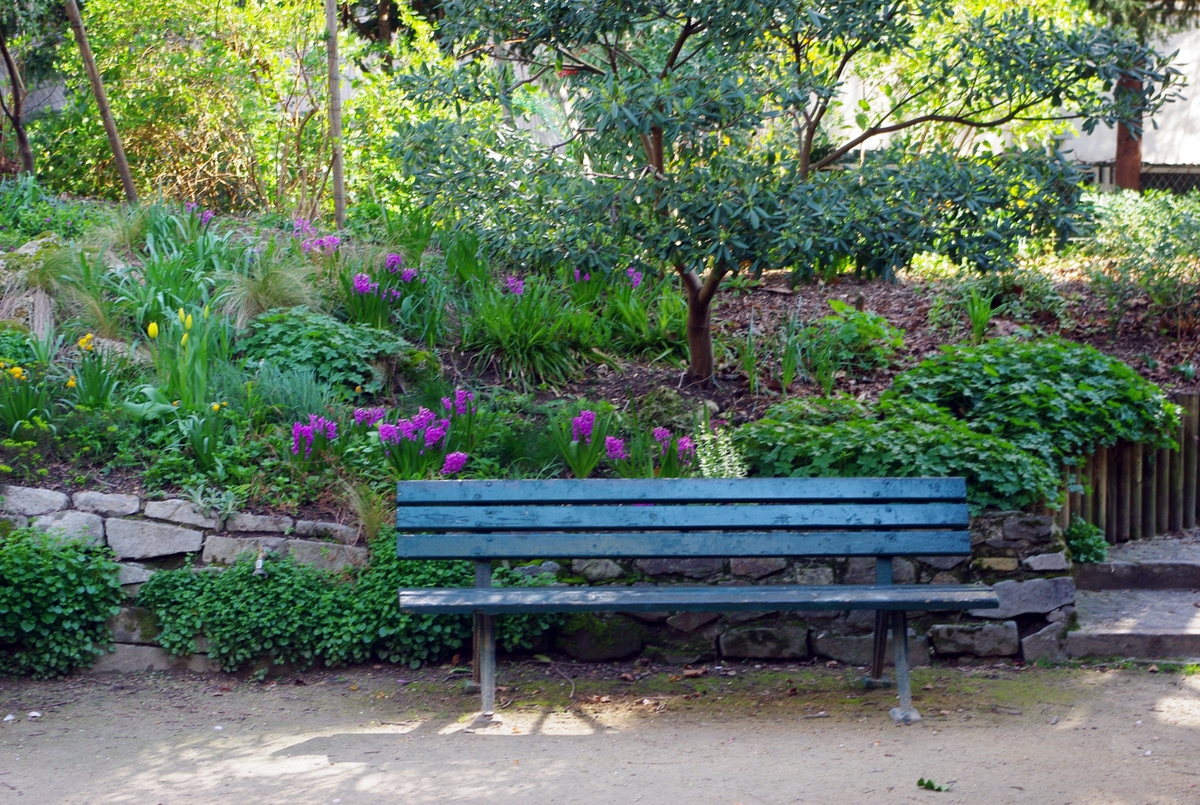
Contemporary benches in the newly created Parc Martin Luther King (17th arrt):
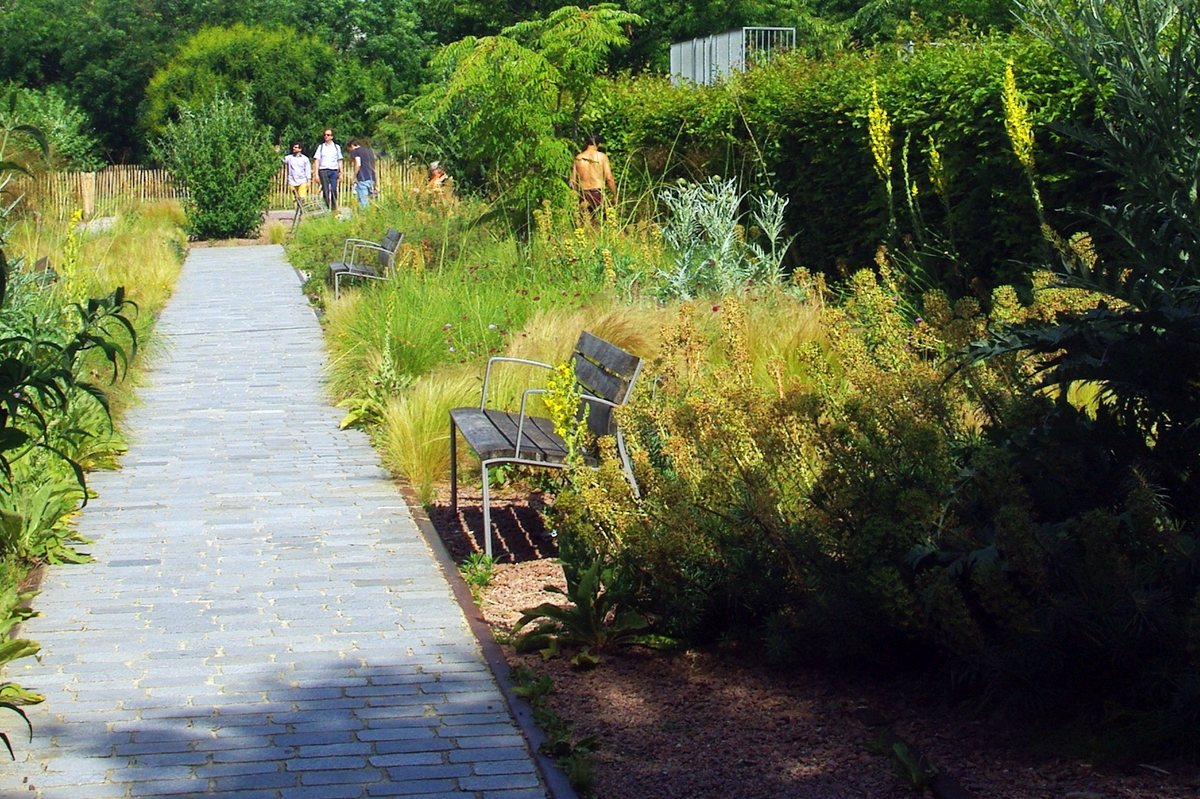
The Parc de Bercy features different styles of benches:

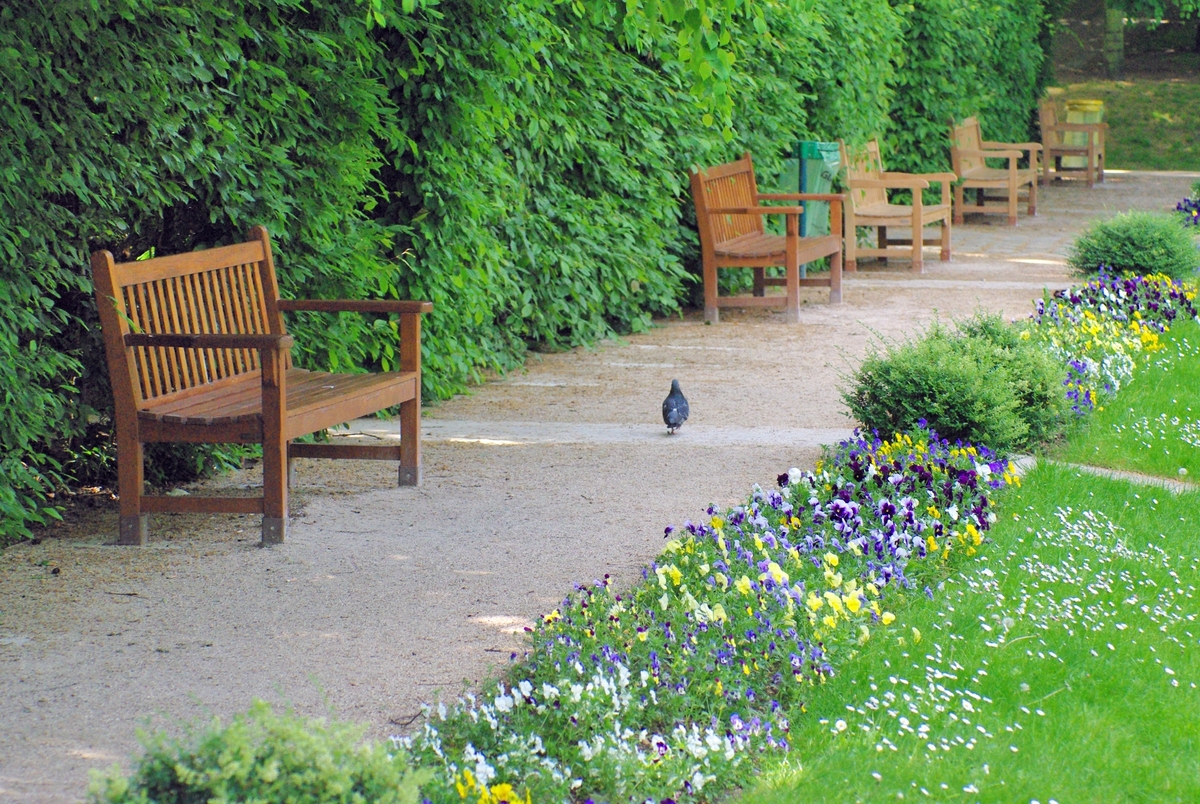
The Luxembourg chair from Fermob
The green-painted chairs found in the Luxembourg, Tuileries and Palais-Royal gardens have become another icon of Parisian style.
The seats were designed by the Paris parks department workshops in 1923.
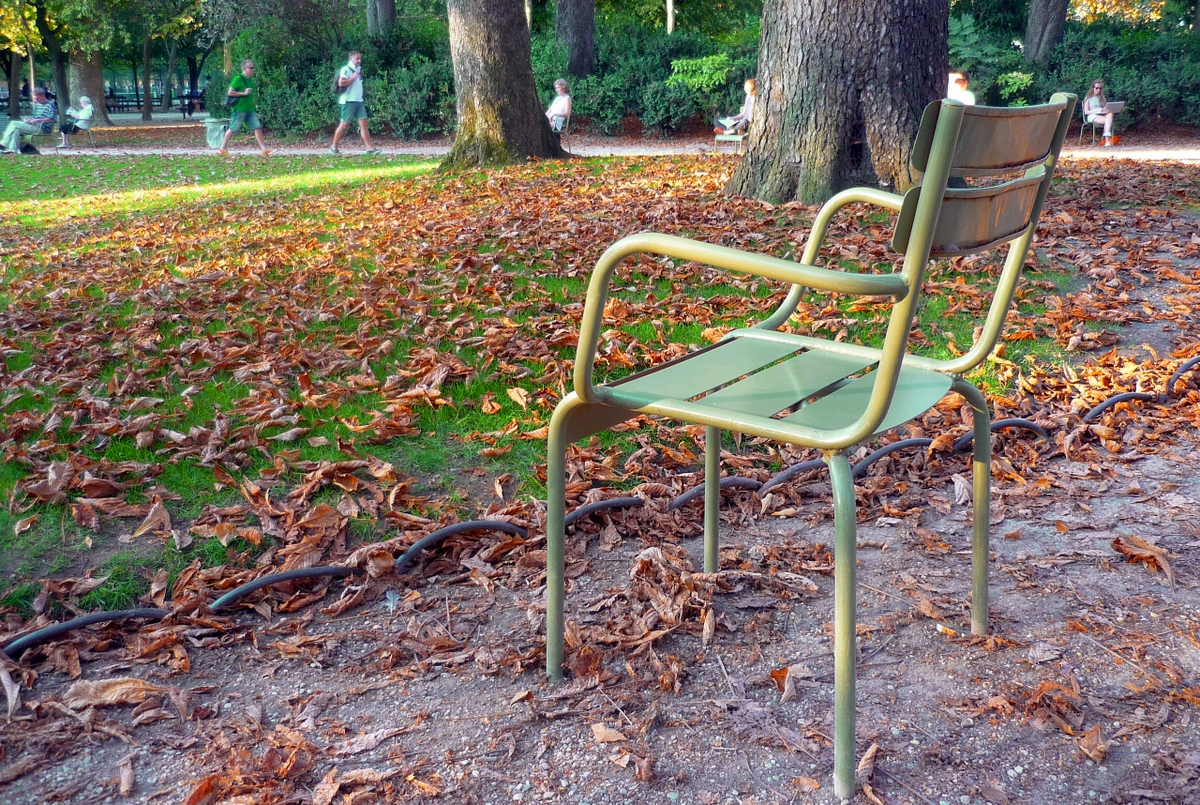
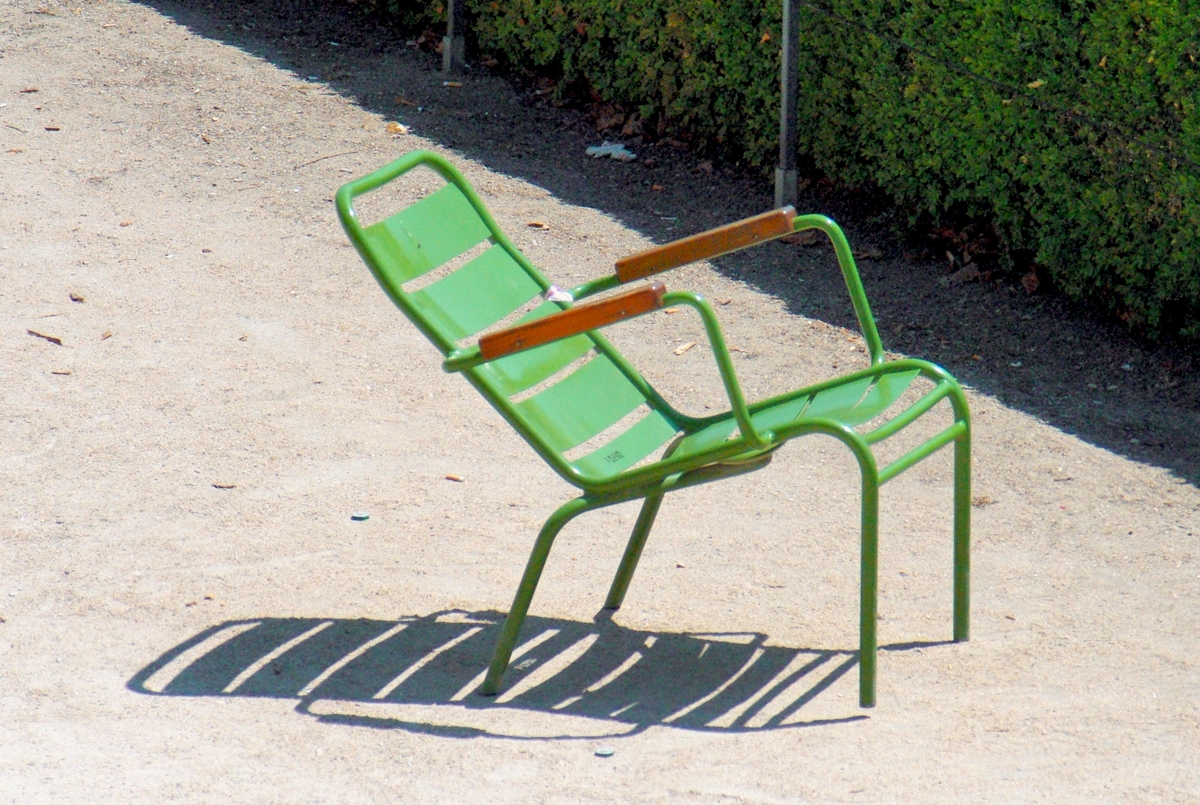

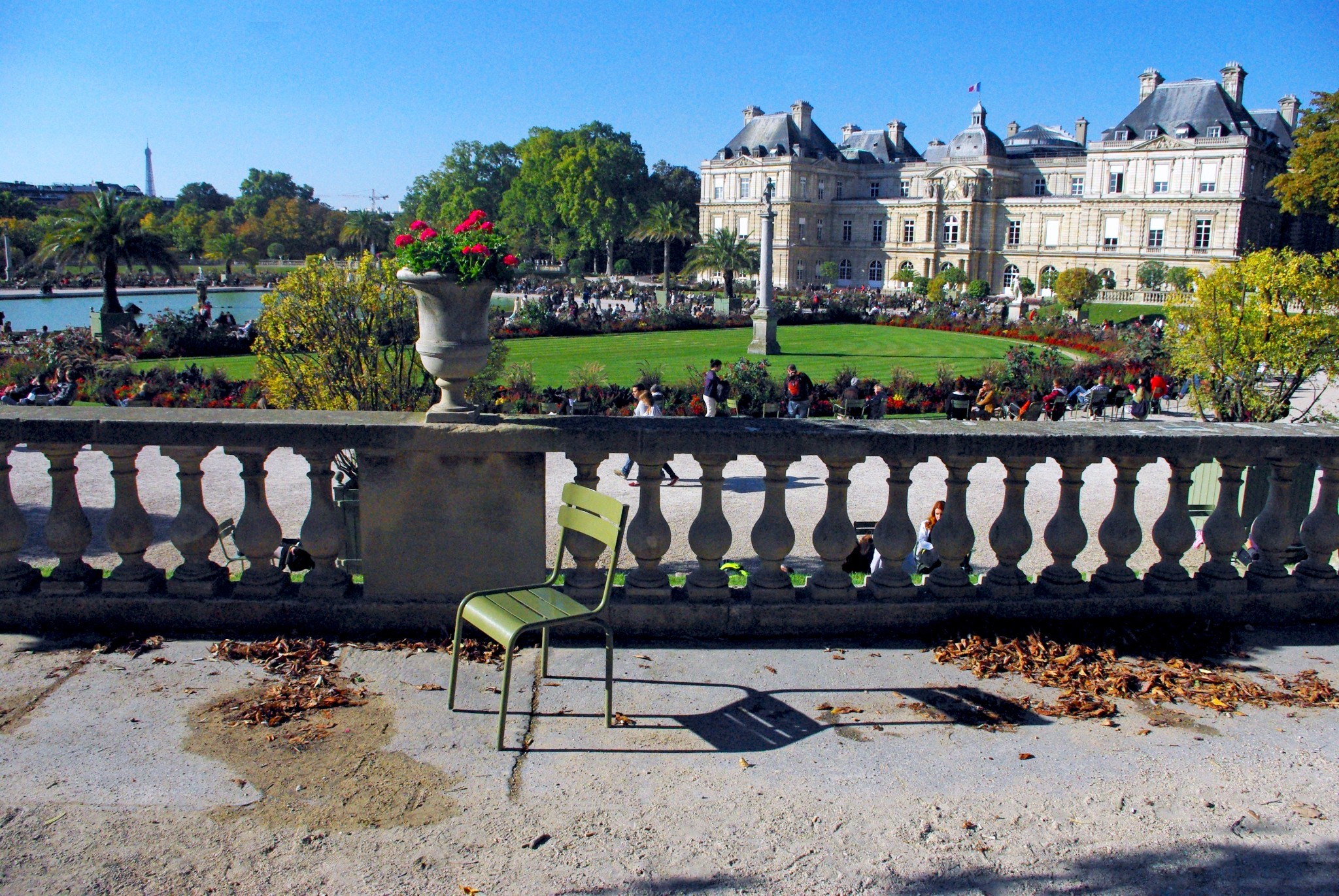
“The result was a chair and armchair with distinctive lines and forms, combining the lightness and resistance of aluminium, the comfort of curved seat slats and the practicality of a stackable frame.” (source: Fermob)
In the three parks of Paris (Luxembourg, Tuileries and Palais-Royal) are three different models of chairs:
- the chair,
- the armchair
- and the low armchair.
They allow you to people-watch and take a breath in the middle of the City.
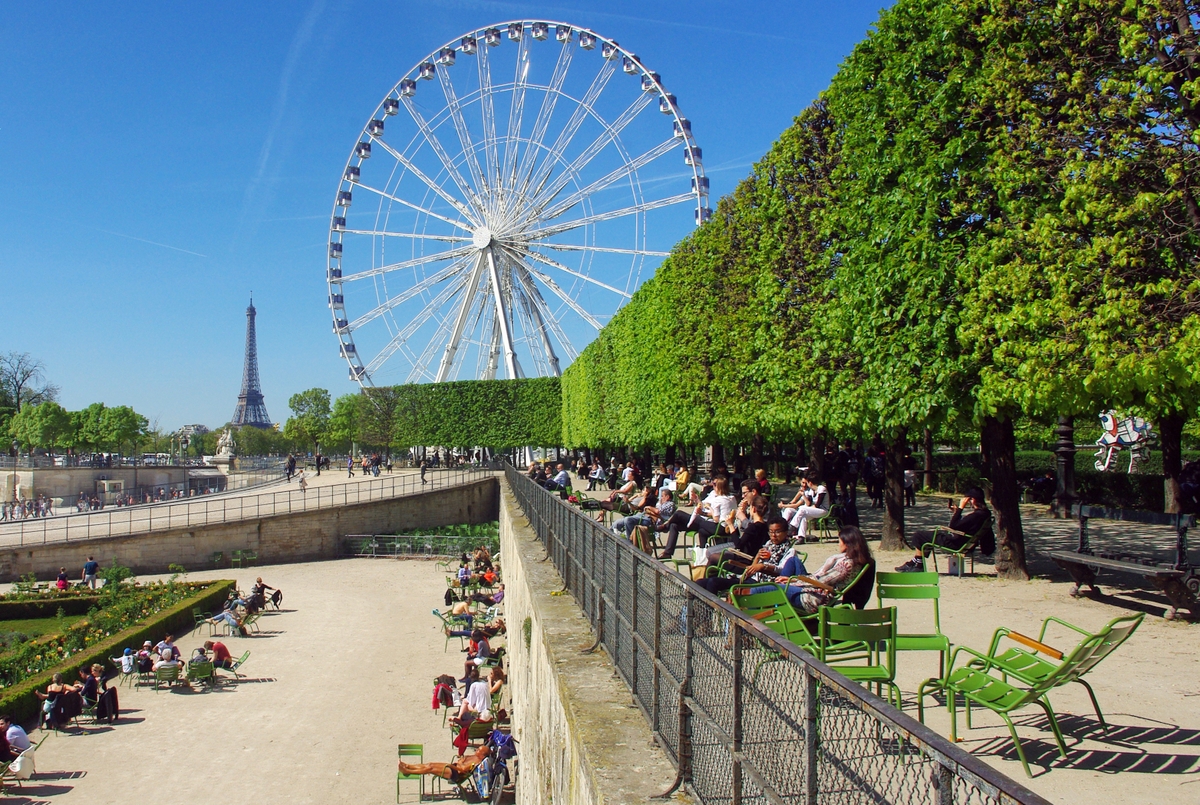
Since then the famous seats have become design objects made by the French company Fermob.
The seats come in different colours.
They are found in cafés and restaurant terraces around the world, from New York to Amsterdam and Sydney!
Check out the different models of Fermob chairs sold.
Check out these two sites for more info about the history of Fermob’s Luxembourg Chair:
Did you know?
- un banc is French for a bench.
- une chaise is French for a chair.
- un siège is French for a seat.
- le trottoir is French for the pavement (or sidewalk).
Did you find what you read interesting? If so, please do share this article on Facebook or Twitter!
Pin it for later
Like what you read? Pin it on Pinterest:
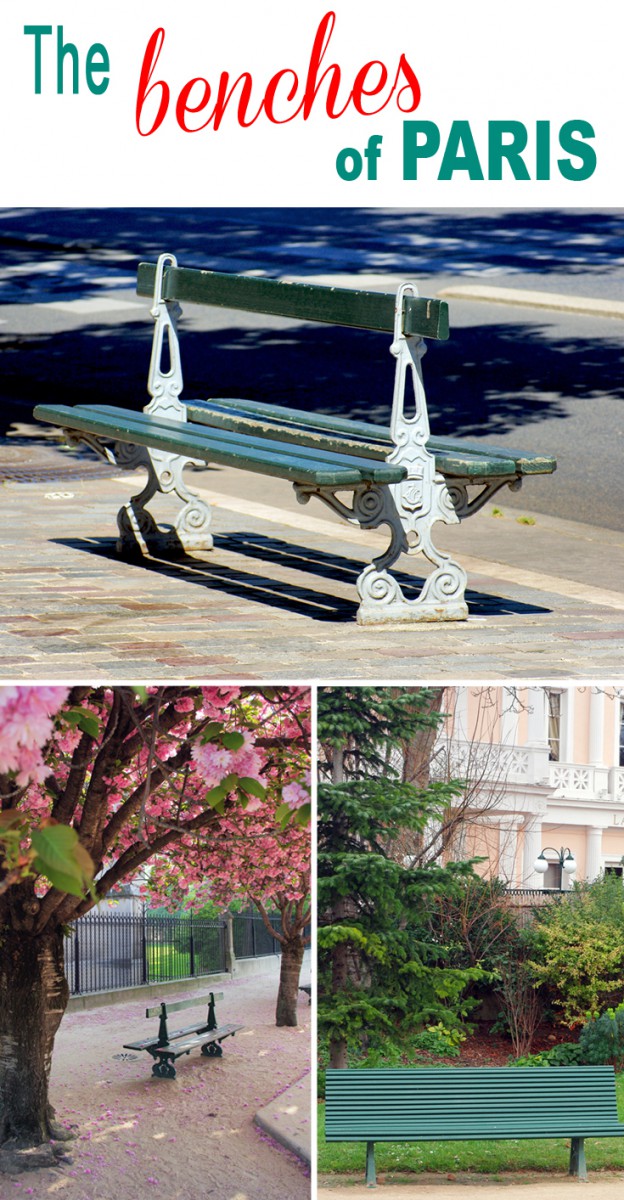





Loved the article for it’s informative history of benches. I am discovering the significance of this invention and wondered many times when it was made and who was the genius behind it. Thank you.
You’re welcome! ?
I have just published a book, ‘Chair Stories’ which is street photography concentrating on where we sit, rather than the people sitting. Shot across Europe, it is a sort of ‘lifestyle of chairs’. It started 20 years ago in Paris and has a big Paris section concentrating on the beautiful seating of the parks and cafes. It might interest you, and we might chat? To get a taste see my Instagram site or website: http://www.richarddunkley.co.uk
I wish I had found your site 10 years ago!
How many times have I taken the benches of Paris for granted? Thanks for this interesting information, Pierre; I’ll look at them differently from now on!
You’re welcome Ellen! 🙂
Benches are very important and not just in Paris! I use them for periods of rest after walking a long time in cities. An interesting article. Thanks Pierre!
Thank you David!
As always, top notch info. Thanx!
Cheers!!
Next time I visit Paris I will be looking for the benches. Loved the article.
You’re welcome! Glad to hear you liked reading the article!
Thank you for your article; it is excellent! A store owner in Paris Centre wants to repaint and repair two "straight" benches and wants to be sure it is legal. What department in the Mairie is responsible? It may be unusual for someone to volunteer to repair City property, so he wants to do the right thing!
Sorry for the delay in my reply. I looked at the Ville de Paris’ website and couldn’t find information to help you. However, I think the best thing to do is to contact the relevant Mairie. For instance, the Mairie for the Central arrondissements of Paris is https://mairiepariscentre.paris.fr/pages/contact-7573 Hope this helps!